The members of the Scientific Club “Philology” headed by PhD in Philology, Associate Professor of Germanic Philology and Translation Department of National University “Yuri Kondratyuk Poltava Polytechnic” Anna Pavelieva joined the Faculty of Humanities University Week and held a meeting, during which they studied the idiomatic richness of Hohol’s language in his works. First-year students and students of Poltava Scientific Lyceum No. 3 also joined the discussion.
“2021 marks the 190th anniversary of the first publication of “A Terrible Vengeance” by Mykola Hohol, which is believed to be the best work of his early writings. Many new scientific articles are published now about this short story to celebrate the anniversary of the novel, and our club decided to dedicate a meeting to the lexical means of creating the world picture in the story and to studying the idiomatic units of the work,” Head of the Club Anna Pavelieva commented.
It is commonly known that all the short-stories by N. V. Gogol are characterized by peculiar narrative style of the author and the narrators – Rusty Panko and Foma Grigorievich. The artistic language of both the beekeeper and the Beadle of the Dikanka Church is full of vernacular, homely phrases, phraseologisms, which make the narrative more metaphorical and form especial style of “Evenings on a Farm Near Dikanka”.
“It was useful for us to listen about the structural-semantic analysis of phraseological units in the literary text of this short-story and methods of their translation into English (based on the translation by R. Pevear and L. Volokhonsky). It was the first time that I visited such a meeting, but I discovered a lot of interesting facts for me.” first-year student of specialization No. 035 Philology of Faculty of Humanities Amina Alkhatib said.
“Phraseology as a science is still developing so it is extremely important to conduct research in this field. The participants of the meeting studied the idiomatic units according to their connotation, and divided them into 3 types: 1) phraseological units of demonological semantics; 2) phraseological units of biblical-evangelical semantics; 3) colloquial and vernacular-expressive phraseological units (which, in their turn, are divided into those originating from: a) everyday life; b) folk art; c) historical realias; d) translations of foreign phraseological units),” Anna Pavelieva said.
Students also studied the idioms on semantic level and classified them into phraseological combinations, phraseological unities, phraseological expressions, and phraseological fusions.
“This was the third meeting of our scientific club that covered the peculiarities of translation of Hohol’s early works into English, and I hope that we will continue analyzing different aspects of translation, especially in the field of phraseology,” Head of the Club, PhD in Philology, Associate Professor of Germanic Philology and Translation Department of National University “Yuri Kondratyuk Poltava Polytechnic” Anna Pavelieva summarized.
During one of the meetings the members of the club discussed Hohol’s terrifying image.

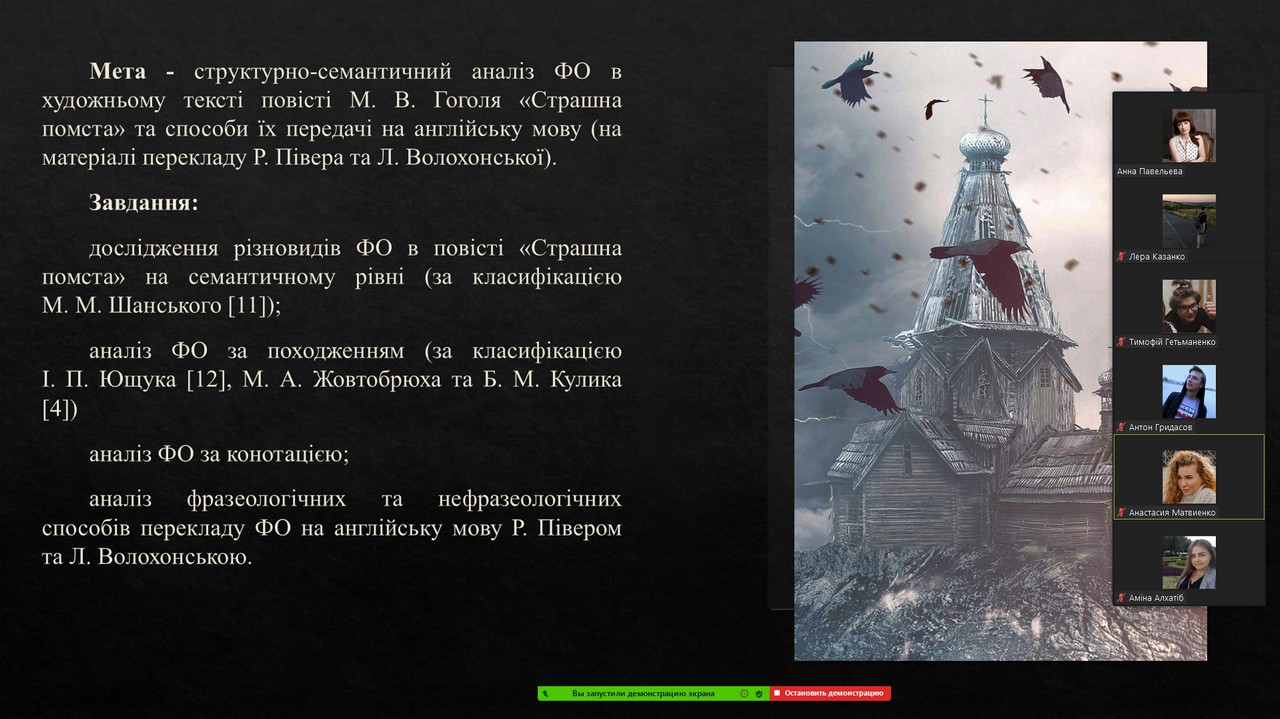
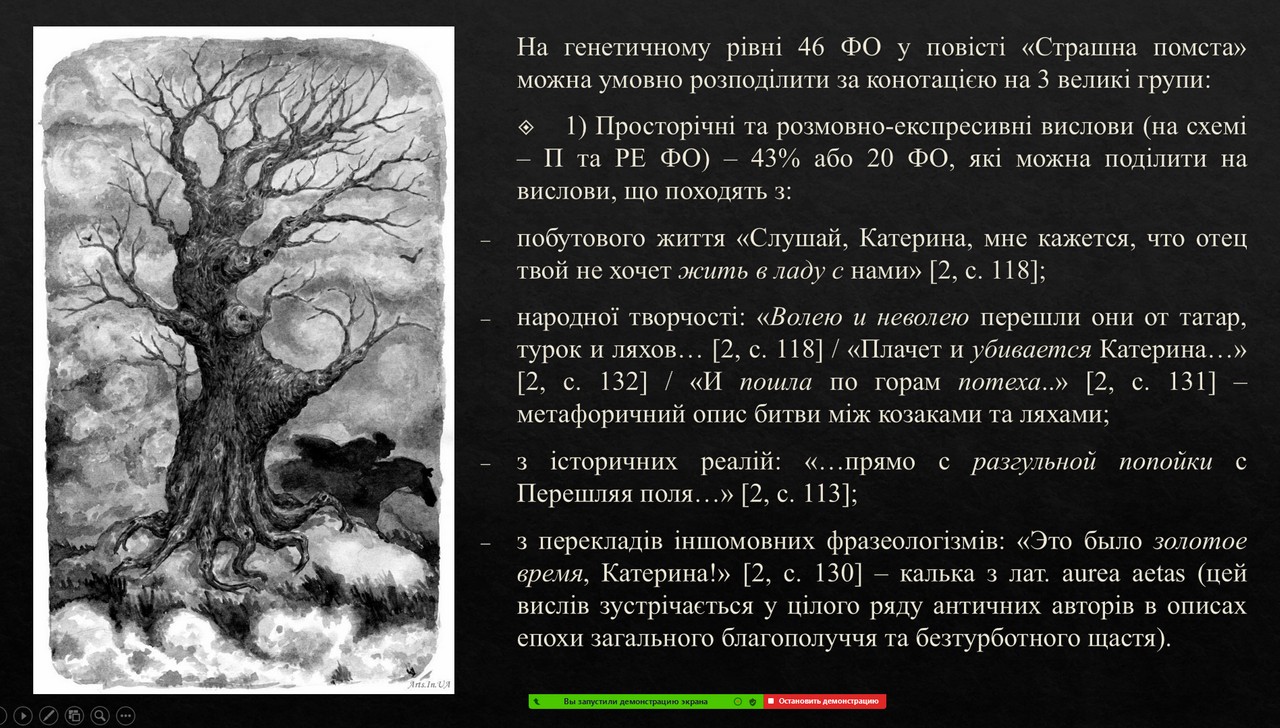
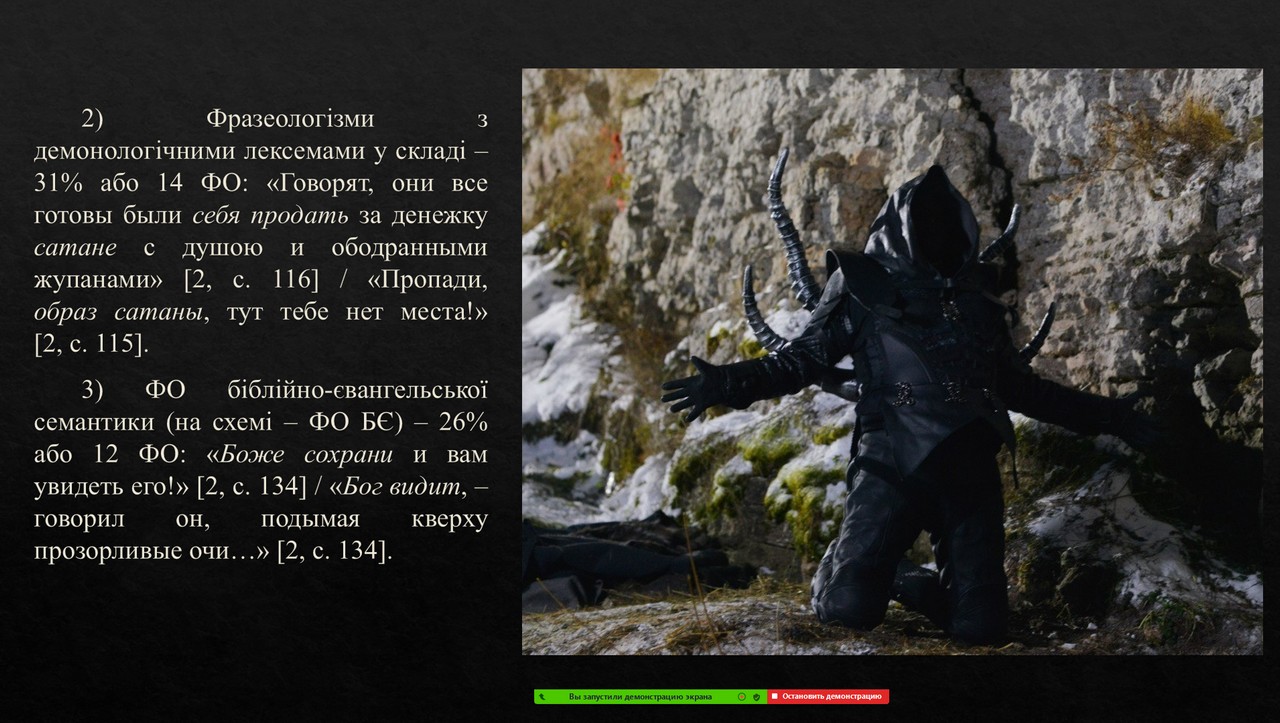
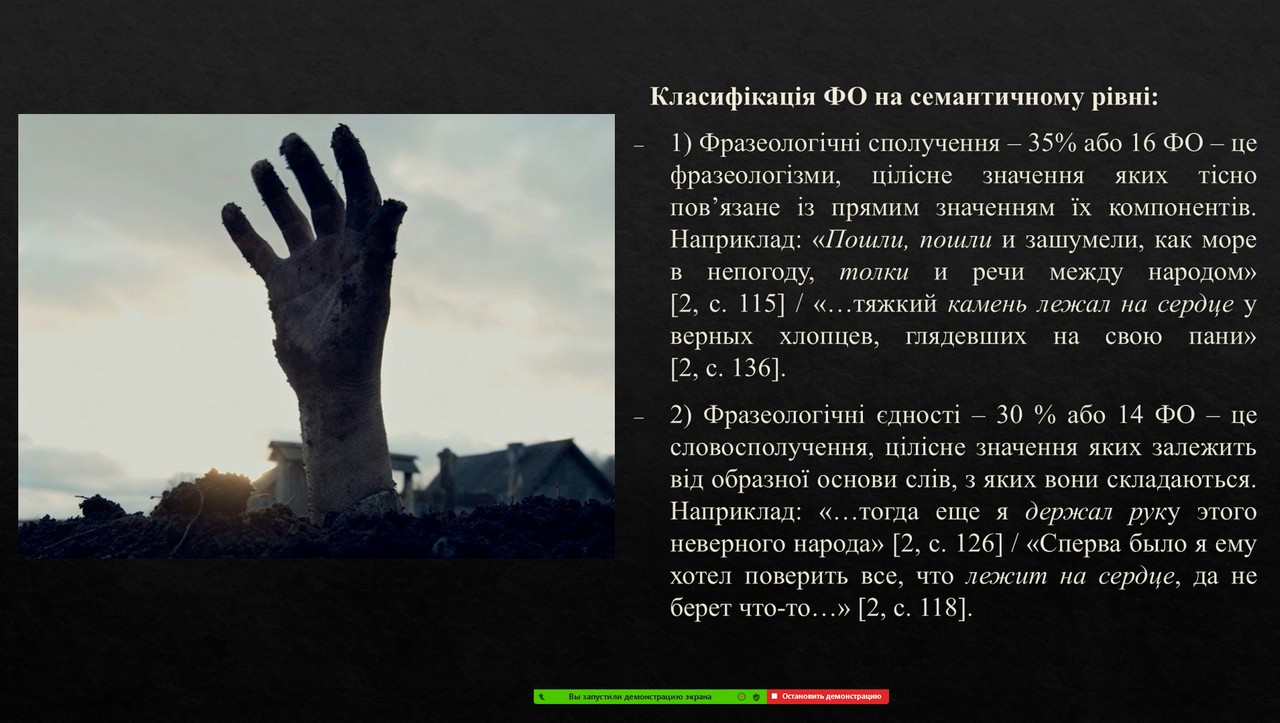
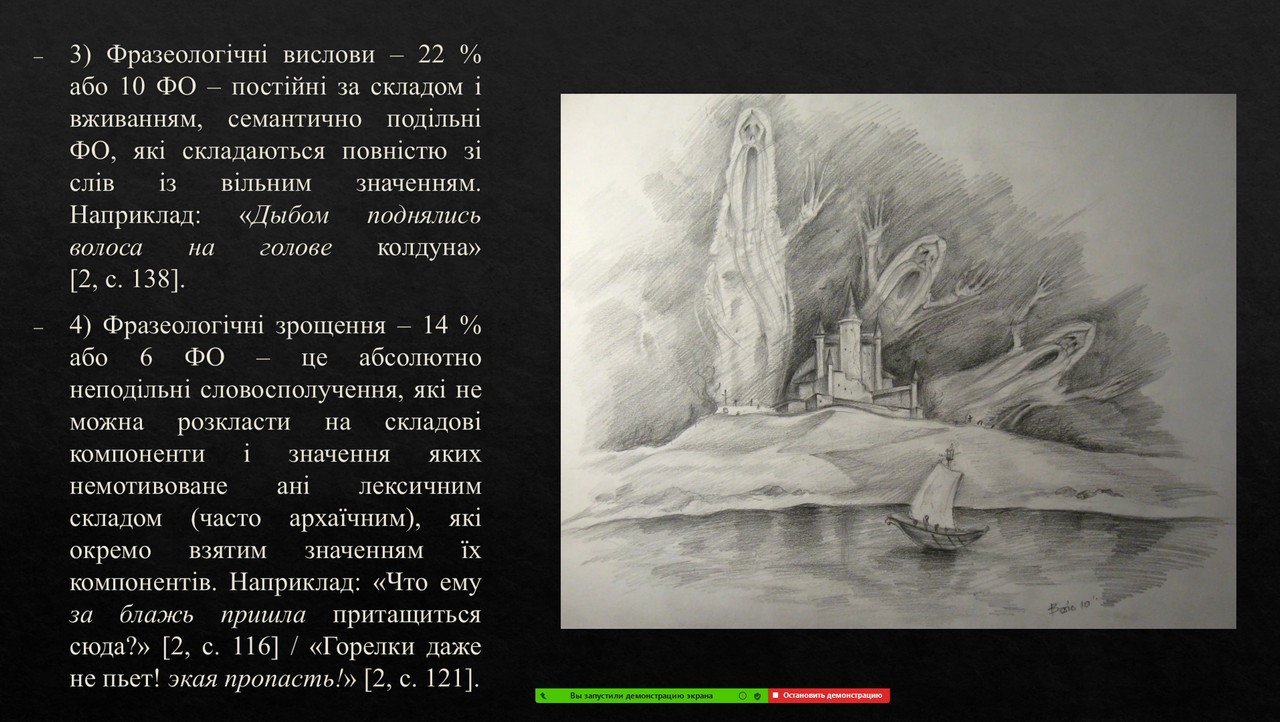


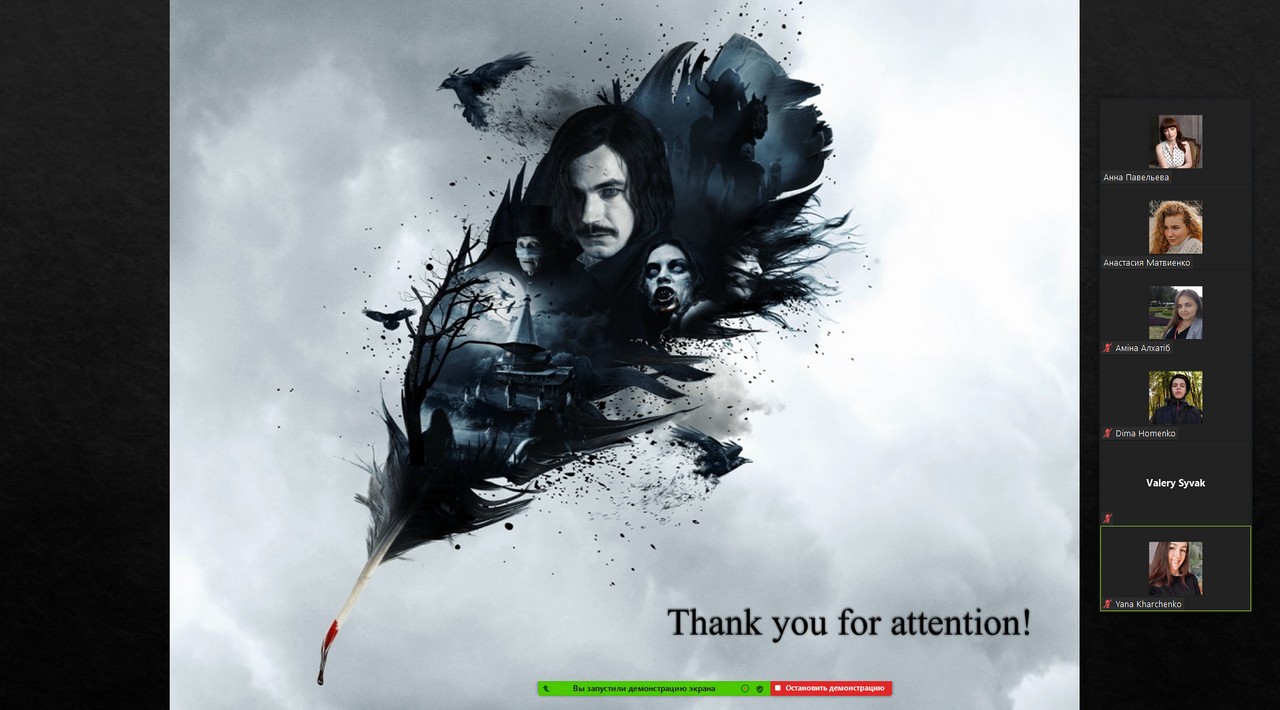
Media Center of
National University “Yuri Kondratyuk Poltava Polytechnic”



